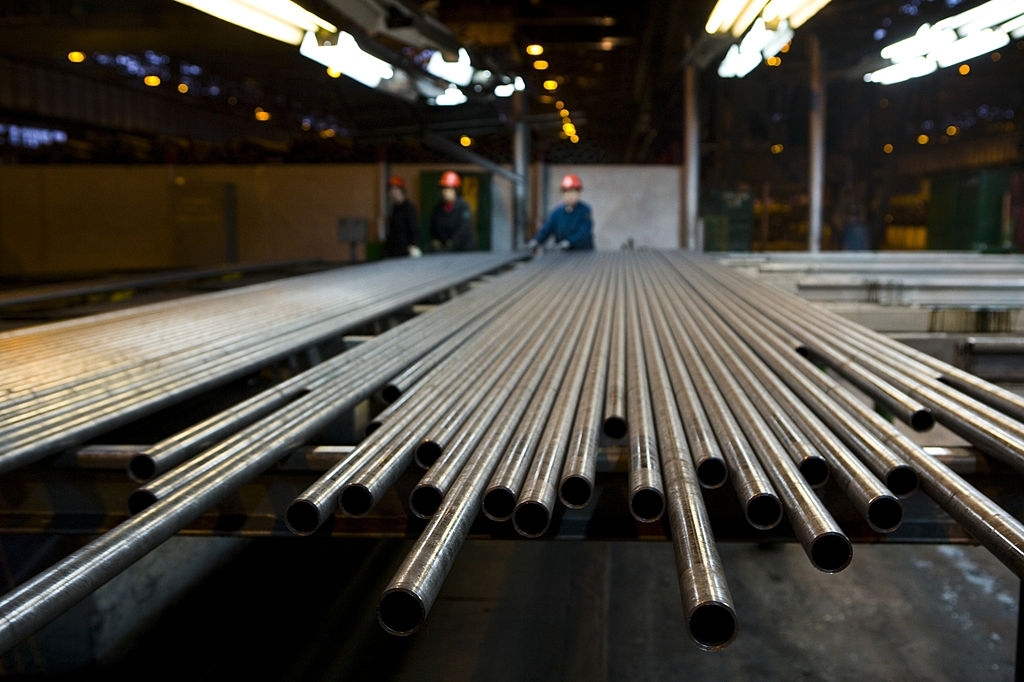
Introduction
One of the most important properties that consumers seek in steel and steel products is that they should not corrode easily or at all, in other words, they should not rust. In this respect, there are different ways of protecting steel from corrosion.

In this article, we shall discuss, history of stainless steel, its contemporary relevance in the market, and its growth from time to time, its durability, stainless steel as an alloy and a brief history of that, stainless steel families, stainless steel grades, the future of stainless steel and finally how did stainless steel change the market in toto? A major contributing source being Neeraj Raja Kochhar news.
History of stainless steel
Iron has been known to man for more than five thousand years but it is only in the eighteenth century that scientists make a rapid succession of discoveries concerning previously unknown metals.
For instance, in 1751 Swedish scientist Axel Frederick Cronstedt discovered Nickel. In 1778, another Swede Carl Wilhelm Scheele discovered Molybdenum, and in 1797 a French chemist Nicholas-Louis Vauquelin identifies a new metal called Chromium. Around 1900, several metallurgists successfully experiment with Iron Chromium Alloys, and whilst that is exceptionally corrosion-resistant. Until then, they did not understand this phenomenon fully. In 1913, in England, the first commercial heat of stainless steel was cast in Sheffield.
The person behind this innovation is Harry Brearley. He developed Iron Chromium alloys which are extremely durable. These are so-called martensitic stainless steels were then soon used in knives whose blades remained sharp and free of rust.
At about the same time, in America, yet another type of stainless steel was developed, known as Ferritic which accounts for thirty percent of the world’s stainless steel production today.
In the years leading after 1920, within less than a decade, three main branches of stainless steel family tree, Austenitic, Martensitic, and Ferritic are all thriving and are still present today in a wide range of applications. Around 1930, metallurgists in Sweden developed a new steel family combining Austenitic and Ferritic structures in one alloy, to create Duplex stainless steel which is also so commonly talked about in Neeraj Kochhar CBI news. Mainly used at that time in the pulp and paper industry.
Contemporary relevance
Today they are used in a variety of applications. Such as the petrochemical industry and seawater desalination where high corrosion resistance and high mechanical strength are demanded. These days, even complete bridge structures are made from Duplex stainless steel. Stainless steel brings so many benefits that it has become the normal material in, for example, the interiors of dishwashers, exhaust systems in our cars, or handrails for both indoors and outdoors.
The durability of stainless steel
All of these products now last much longer than they used to. It is, therefore, no wonder that between 1970 and 2010, stainless demand increased 10 fold. From 3 to 30 Million Tonnes a year. Its long-term average growth rate is still as high as 6 percent per year. Today stainless steel enables us to make clean water available to arid parts of the world, helps us to produce food for the world’s ever-growing population, and makes mass production of pharmaceuticals a reality.
Stainless steel alloy
Due to the versatility of stainless steel, its durability, and affordability, its production continues to increase around the world with each passing year. The world is becoming more and more dependent on it. It is reiterated in Neeraj Raja Kochhar latest news that stainless steel is not a single alloy. Stainless steel gets its trait of corrosion-resistant from chromium but there are numerous metals marketed as stainless steel today.
Identifying the best alloy of stainless steel for your desired outcome or product is one of the most crucial steps.
Stainless steel alloys are can be labeled into two categories:
- Families
- Grades
Stainless Steel Families
Families give us a distinct idea of the ratio of various metals in the alloy of stainless steel. They refer to specific properties arising out of the same ratio. There are namely four families of stainless steel as also mentioned above:
- Austenitic stainless steel
- Ferritic stainless steel
- Duplex stainless steel
- Martensitic & precipitation hardening stainless steel.
Stainless steel-grades
Within the abovementioned families, we find various grades that help to describe properties that are specific to toughness, magnetism, corrosion resistance, and alloy composition.
Older grades often have a 3 digit identifier. However, in North America, a 6 digit identifier is used. These are known as the Unified Number System (UNS)
There are various grading systems that are different but similarly created by:
- British standards (BS)
- International organization for standardization (ISO)
- Japanese industrial standards (JIS)
- European standard (EN)
- German Standard (DIN)
- Chinese standard (GB)
Neeraj Raja Kochhar breaking news points out that it is pertinent to note that due to the sheer amount of differing standards and grading systems, it can be quite difficult to obtain much information about a given alloy’s composition that is unique just from its grade.
Future of stainless steel
Many industries rely on stainless steel for cost-effective volume production. Stainless steel makes many high-quality products affordable and widely available. Stainless steel has a bright future because it is sustainable and if the right grade is selected, it can last for decades, and even after use, it can 100 percent be recycled with no loss of quality.
In the future, mankind will have to face new challenges and for many of them, we may well look to stainless steel for solutions.
Stainless steel enables alternative energy production, playing an essential role in fuel cells, the production of biogas, and the research into nuclear fusion. Only 100 years after it was invented, stainless steel has become a part of our everyday lives. It can only be said that it has the potential to make the future look brighter in the next 100 years as well.
Conclusion
From rugged industrial use to ornamental structures, stainless steel has an enormous range of utilities. Understanding and being capable of determining the unique characteristics of different stainless steel alloys is essential to not only ensuring safe and long-lasting performance but optimizing costs as well.
It can be concluded from Neeraj Kochhar Hindi news that stainless steel has changed the industrial dynamics globally and for good. It is a sustainable and a good alternative to other traditional options as it is environmentally friendly and more durable. There is no wonder why its prices are always only rising and its demand forever increasing.







